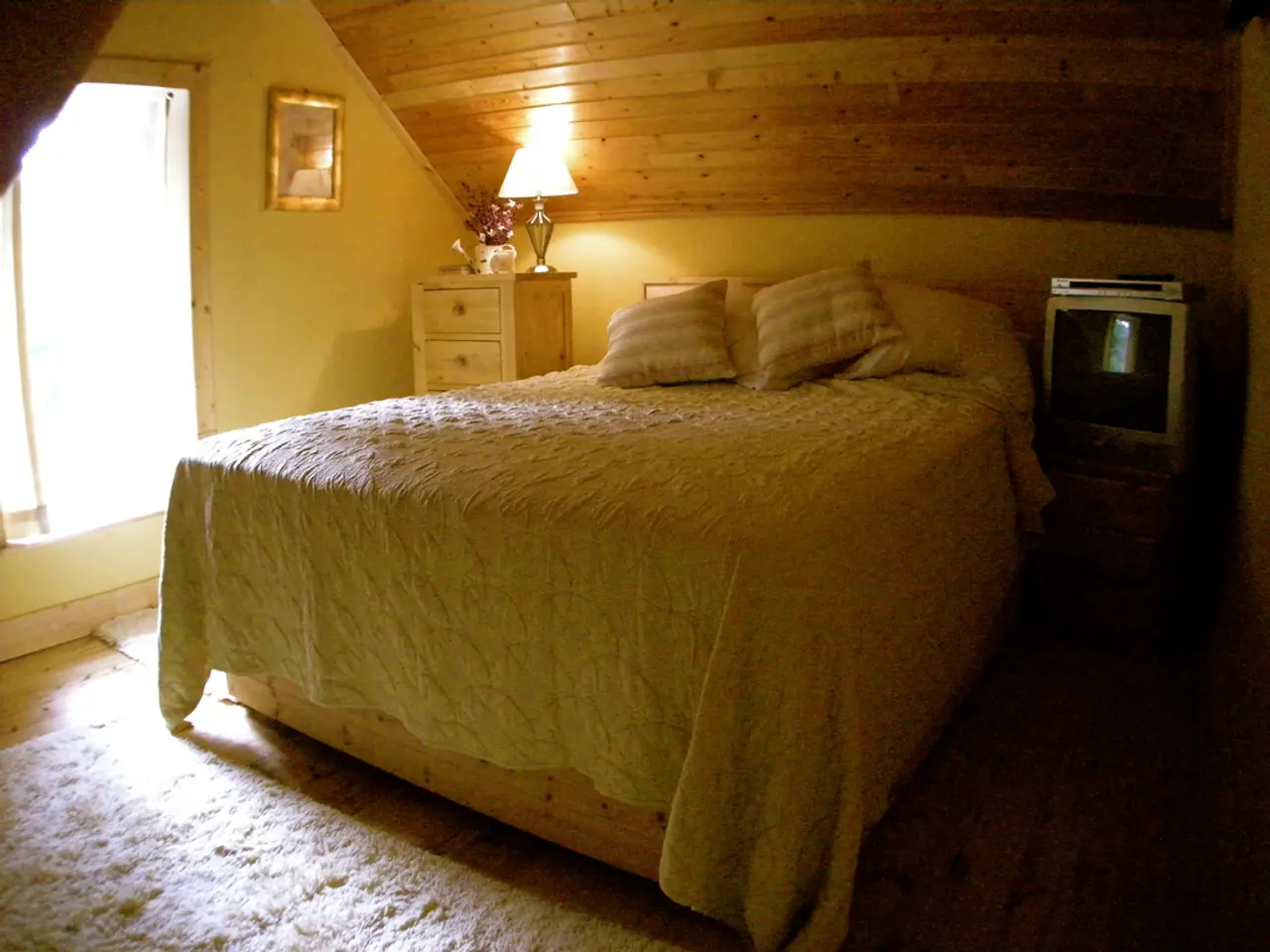Redesigning Your Bedroom for Fresh Starts: A Comprehensive Guide
A well-designed bedroom is a sanctuary that reflects your personal style while serving practical needs. Here's a step-by-step guide to creating a bedroom that balances aesthetics and utility.
**1. Define Your Style and Color Palette**
Begin by identifying a cohesive style that resonates with you. Platforms like Pinterest or Instagram can provide inspiration, helping you capture what appeals to your tastes. Once you've narrowed down your style, choose a colour palette that complements it and the room size. Light colours are ideal for small bedrooms as they create an illusion of space, while larger rooms can accommodate deeper, richer hues. Aim to limit your palette to three to five complementary colours for visual harmony.
**2. Plan the Layout According to Room Size and Shape**
Measure your room and base the bed and furniture placement on these dimensions. In small bedrooms, place a queen or full-size bed along the longest wall, using compact nightstands and possibly wall-mounted lighting to save space. Larger rooms can be zoned into separate areas, such as a sleeping space and a sitting nook. Position the bed opposite the door or on a short wall in narrow rooms to optimize flow and usability.
**3. Select Functional Yet Stylish Furniture**
Prioritize comfort and practicality by choosing furniture that suits your lifestyle but also complements the room’s aesthetic. Opt for multi-functional pieces like storage ottomans or beds with built-in drawers to maximize utility without sacrificing style. Consider low-profile furniture in small rooms to enhance a sense of openness and use vertical storage to free floor space.
**4. Coordinate Textures and Accessories for Depth and Balance**
Incorporate a variety of textures—smooth surfaces with soft fabrics—to add depth without overwhelming the space. Accessories and decor should align with your colour palette and style, enhancing the room's cohesiveness and personality. Use accent walls or accessories to introduce darker tones if desired, especially in larger rooms.
**5. Optimize Lighting and Enhance Space Perception**
Maximize natural light and use layered lighting (ambient, task, and accent) to make the space inviting and functional. Mirrors can create an illusion of openness, especially in smaller rooms. Choose lighting fixtures that complement the overall style while providing adequate illumination for different activities.
By thoughtfully combining these elements—style, colour, layout, functional furniture, textures, and lighting—you create a bedroom that is both beautiful and practical, tailored to your personal needs and preferences.
For a less formal, brighter, and bigger-looking bedroom, choose furniture with delicate or light-coloured frames. Dimmer bedside lamps, wall lights, and fairy lights strung along the headboard can provide calm, diffused lighting. Engineered wood flooring is a less expensive alternative to solid wood flooring, still strong and practically indistinguishable. Shutters can be a terrific alternative for controlling light, but they may be pricey. The use of light, flowy curtains with black-out blinds is recommended to make a bedroom look larger and brighter during the day while maintaining darkness at night.
For a north-facing, chilly bedroom, consider warm or sombre paint colours to give the impression of a larger space. Opting for freestanding furniture can be less expensive than fitted furniture, especially if you prefer to change your bedroom’s look every few years. For oddly shaped rooms, custom-fitted furniture may be the best option. Solid wood flooring and floor carpet are common types of flooring for bedrooms, aiming to increase warmth and comfort. When selecting bedroom furniture, choose items that also serve as storage to avoid visual overload.
When decorating a bedroom, creating a mood board can serve as a simple starting point. A chandelier or large lampshade can serve as a decorative focal point in a room with high ceilings. Full-length curtains hung higher than the window can give a more abundant appearance. In a rectangular room, it is better to place the bed lengthways. In a small bedroom, consider setting the bed in a corner to maximize available space. Artificial lighting is necessary for bedrooms, especially at night, and an intelligent lighting plan is recommended. Colour is crucial in bedroom design, as it can affect the amount of natural light and encourage rest. When designing bedroom storage, fitted furniture offers a more effective use of space but is more expensive and formal-looking. Short curtains are outdated and can make a window look cramped.
- Incorporate a wardrobe with a light-colored frame and soft fabrics, creating a link between your decor and style in the bedroom.
- For north-facing bedrooms, choose a warm or somber paint color alongside lighting fixtures that produce ample and inviting illumination to create a cozy and roomy space.
- To maintain visual harmony, select bedside lamps, wall lights, or fairy lights with delicate frames in color schemes that complement the bedroom's overall aesthetic.
- Opt for multi-functional bedroom furniture, such as beds with built-in drawers or storage ottomans, to maximize utility while adhering to your preferred lifestyle and style.




